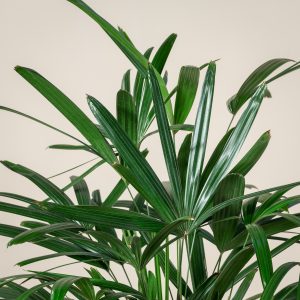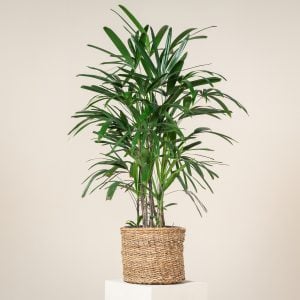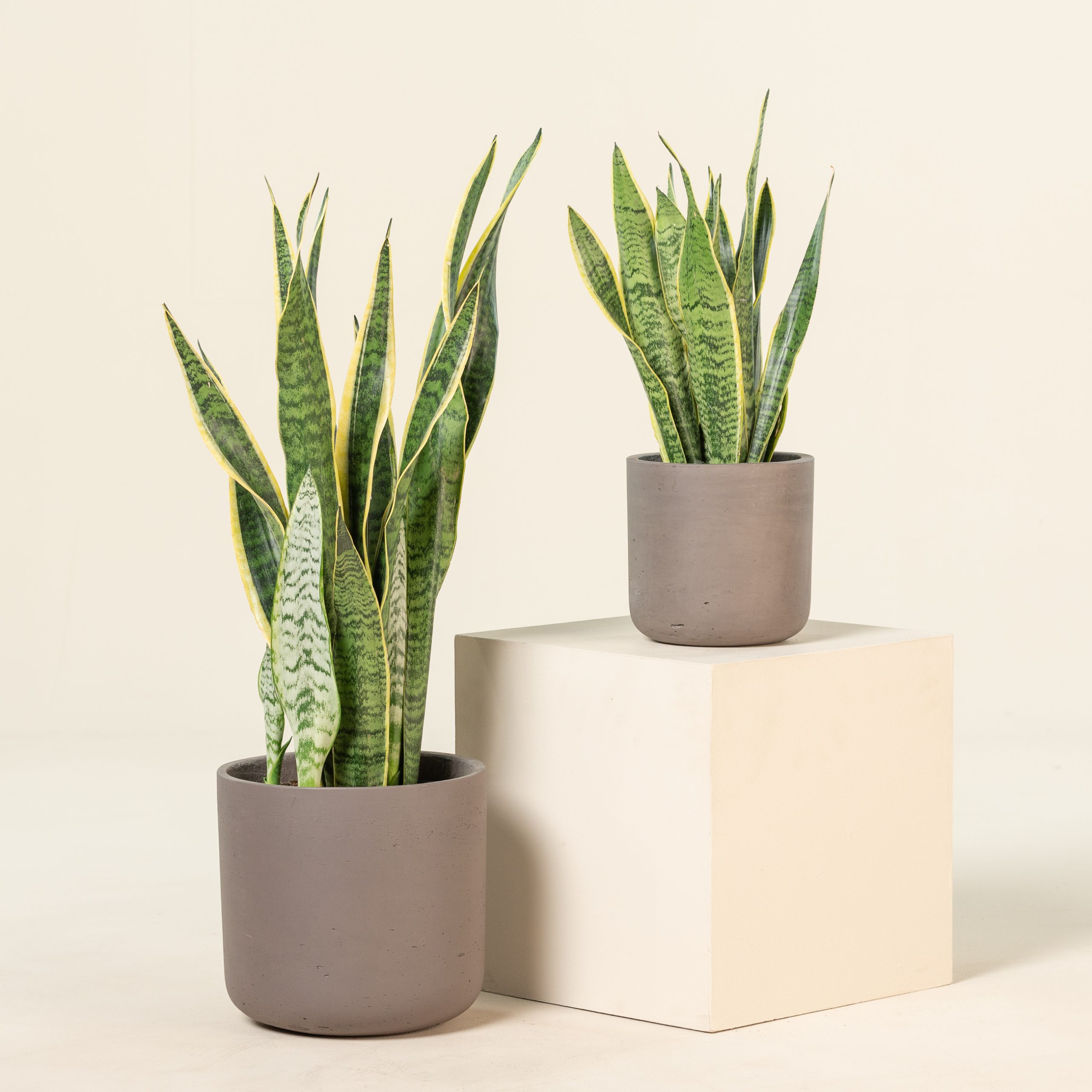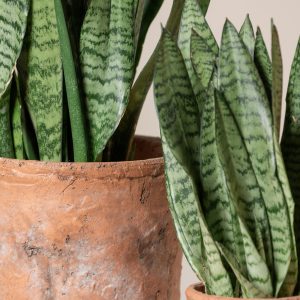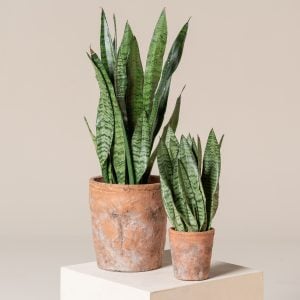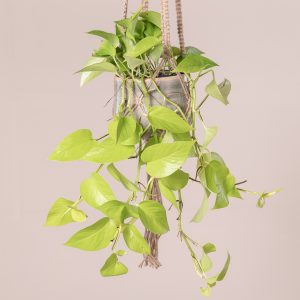It’s relatively easy to find houseplants that enjoy brightly lit indoor locations, either on a windowsill or nearby. But what about those darker corners of the room which don’t receive as much light? While no green plant can survive total darkness, you may be surprised to hear that there are plenty that can cope with lower light levels. Most of these plants originate from tropical and subtropical forests, where the dense canopy can greatly restrict the amount of light that filters down to the understorey, making them a perfect choice to lighten up those gloomy corners around the house.
Here are our top five picks for those tricky locations.
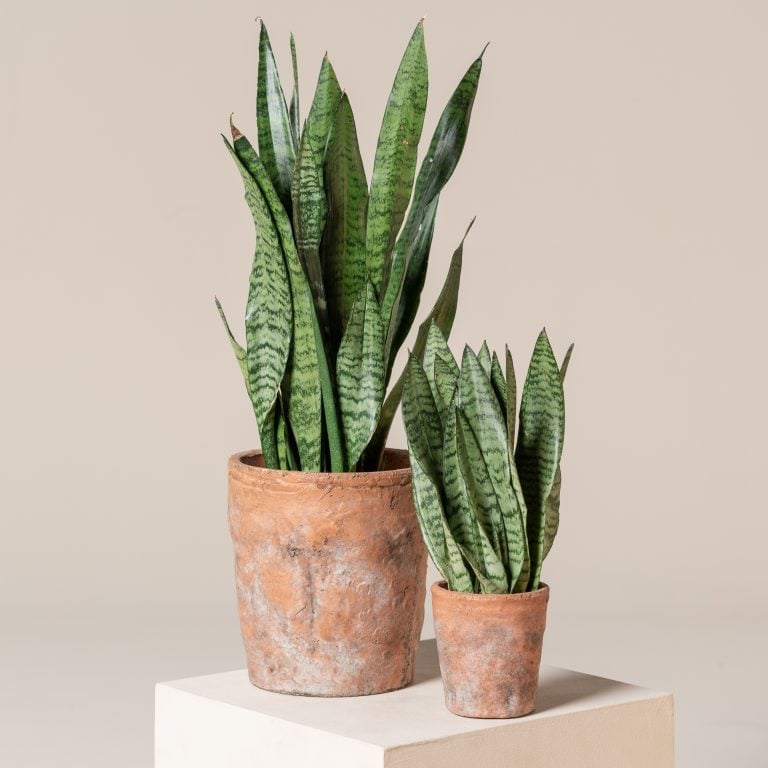
1. Snake Plant (Sansevieria)
The snake plant, named for the reptilian patterns on the foliage, is a classic choice for low-light conditions. With its striking upright leaves that come in various shades of green, white, silver, and yellow, the snake plant adds a touch of elegance to any room. Not only does it tolerate low light, but it also purifies the air by removing toxins such as formaldehyde and benzene.
Additionally, snake plants are incredibly low maintenance, requiring infrequent watering and thriving on neglect.
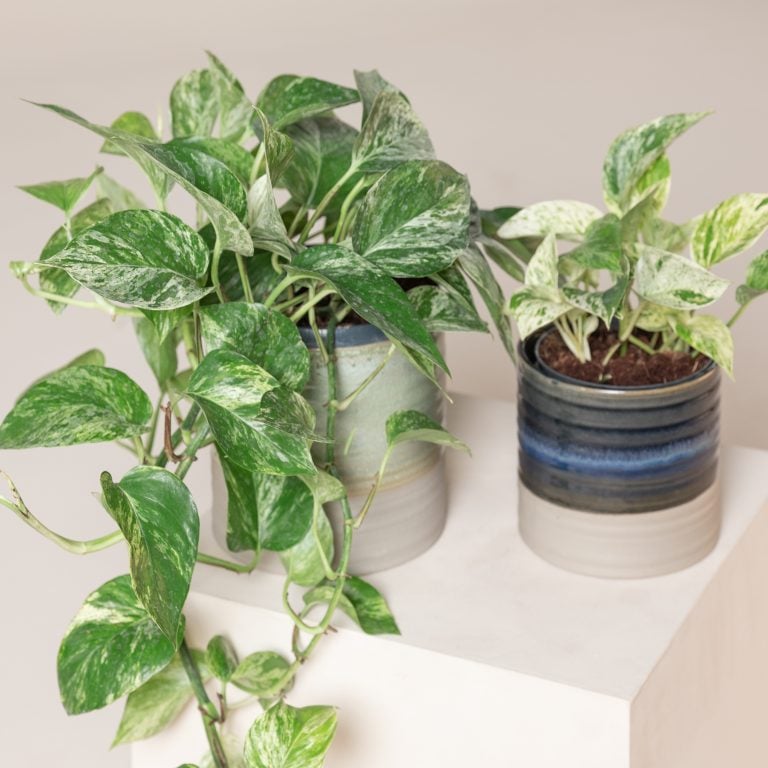
2. Pothos (Scindapsus)
Pothos, also known as Devil’s Ivy, is renowned for its cascading vines and heart-shaped leaves, making it a popular choice for hanging baskets or trailing from shelves. This versatile plant can adapt to a wide range of light conditions, including low light, as it can be found growing up trees in dense jungles in its natural habitat. While it prefers indirect sunlight, it can thrive in dimly lit rooms, although its growth may slow down compared to brighter conditions.
Pothos is not only easy to care for but also acts as an efficient air purifier, helping to improve indoor air quality.
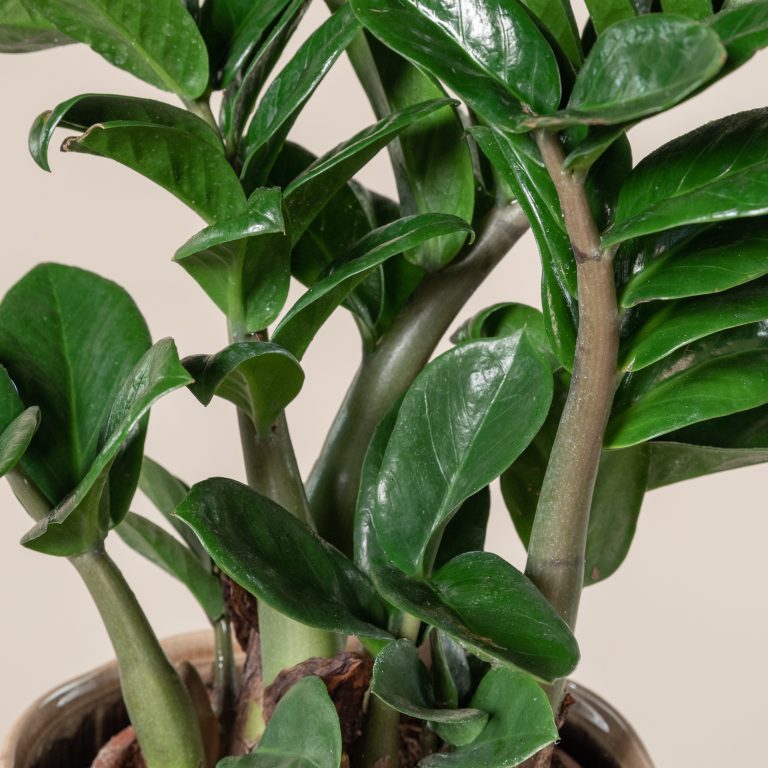
3. ZZ Plant (Zamioculcas)
The ZZ plant is a resilient and visually appealing option for low-light environments. With its glossy, dark green foliage and sturdy stems, this plant adds a touch of sophistication to any space. ZZ plants are known for their ability to thrive in low light conditions, making them perfect for offices, bathrooms, or any area with minimal natural light.
They require infrequent watering and can tolerate periods of drought, making them ideal for busy plant enthusiasts or those prone to forgetting to water their plants.
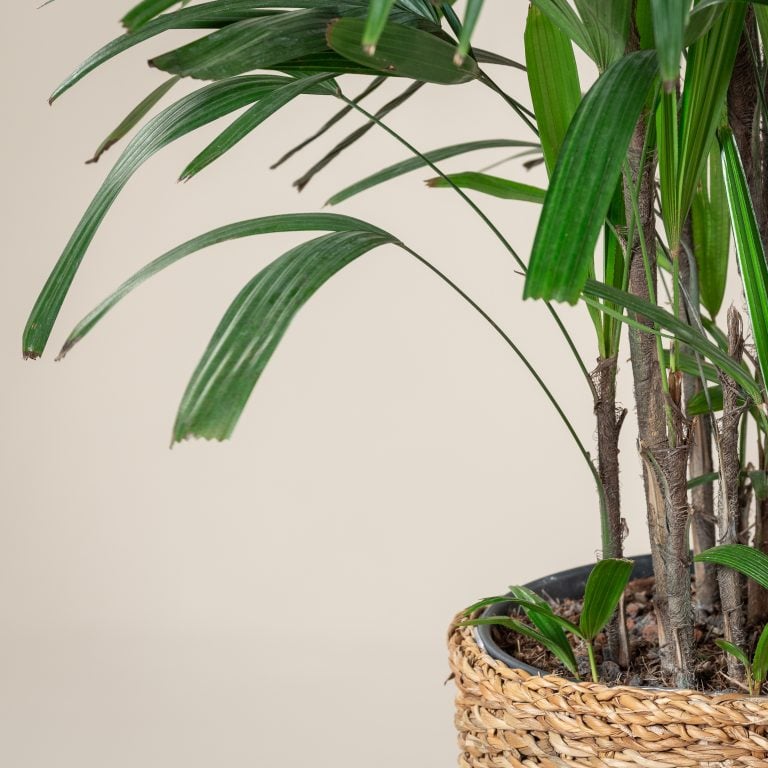
4. Lady Palm (Rhapis excelsa)
Rhapis excelsa, commonly referred to as the Lady Palm, exudes timeless elegance with its dense clusters of slender, fan-shaped fronds. Its symmetrical and architectural growth pattern adds sophistication and a touch of exotic allure to indoor environments.
It is extremely tolerant of low light levels and slow-growing, two attributes which make it ideal as a longterm houseplant. It is also tolerant of a wide range of temperatures so can even be tried in unheated conservatories, at least in the warmer parts of the U.K.
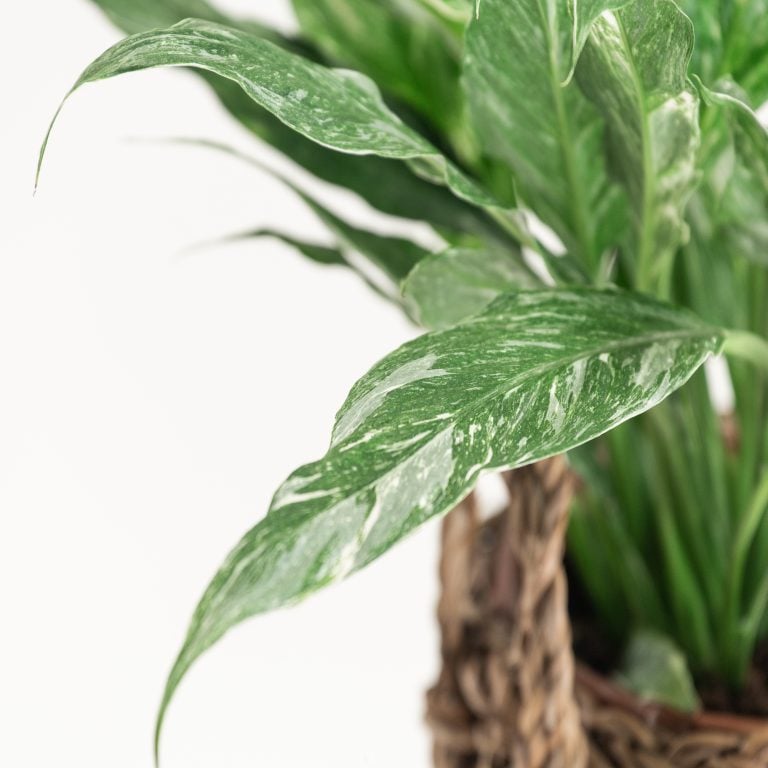
5. Peace Lily (Spathiphyllum)
While peace lilies are known for their love of bright, indirect light, they can also tolerate lower light conditions, albeit with fewer flowers. Their lush, dark green foliage and elegant white blooms make them a popular choice for adding a touch of tranquility to any room. If growing them more for their foliage, consider one of the more unusual cultivars we sell such as ‘Sensation’ with its giant, ribbed leaves, or ‘Diamond’ with splashes of white variegation.
Peace lilies are not only aesthetically pleasing but also act as natural air purifiers, removing harmful toxins such as formaldehyde, benzene, and trichloroethylene from the air. They prefer consistently moist soil and will droop when thirsty, making them easy to care for with a little attention to watering.
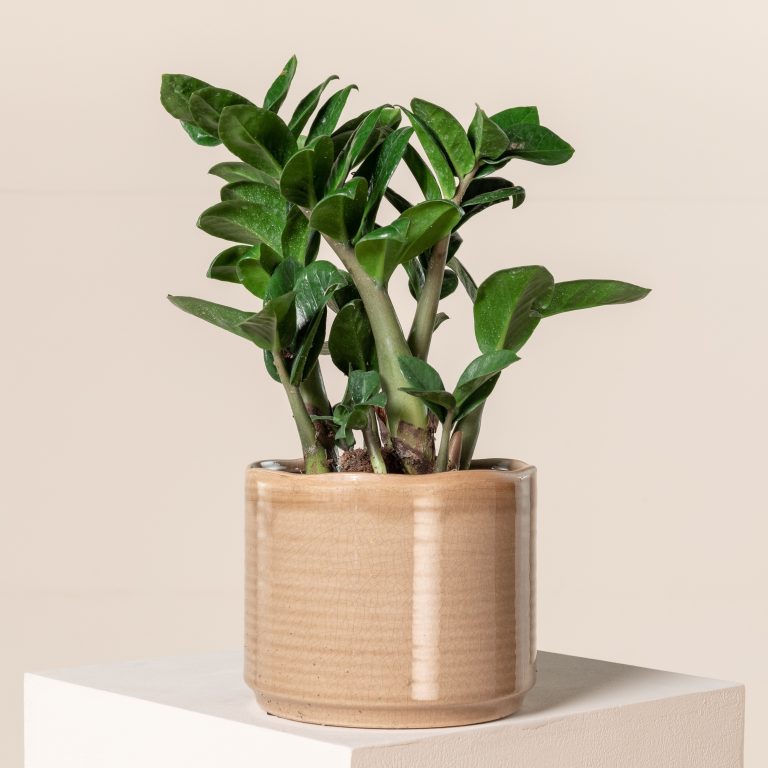
Some last pieces of advice
All of the plants listed above can tolerate dark corners longterm, but it’s always a good idea to give them a few days, or a week, in a brighter location once a month to perk them up. Be careful not to put them in direct sunlight though, as the foliage will have grown accustomed to lower UV rays and will likely burn if exposed to the sun.
If you have a room with no natural light, some of the plants above (especially the Zamioculcas) can tolerate these conditions for up to a week at a time. You could buy two plants and rotate them weekly between a bright spot and a dark interior.
Alternatively, you could consider investing in some grow lights but bear in mind that these normally have to be positioned very close to the plant for maximum effectiveness.
Related products
Related reading
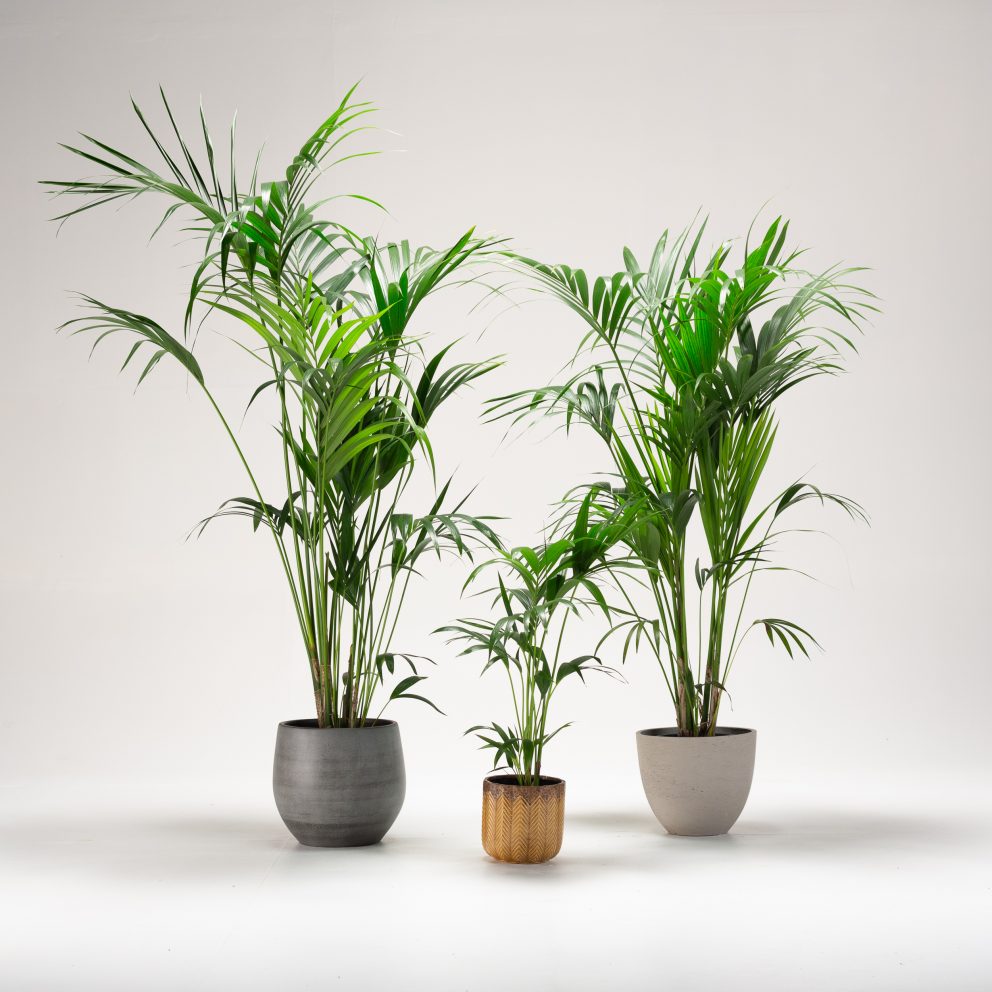
Choosing decorative pots for your indoor plants
Most of the plants sold online will be delivered to you in plastic nursery pots. These are not always the best looking and most likely won’t fit any home style you may have. Here are some tips on how to choose the decorative pot that is the appropriate size for your newly purchased plant.
Read article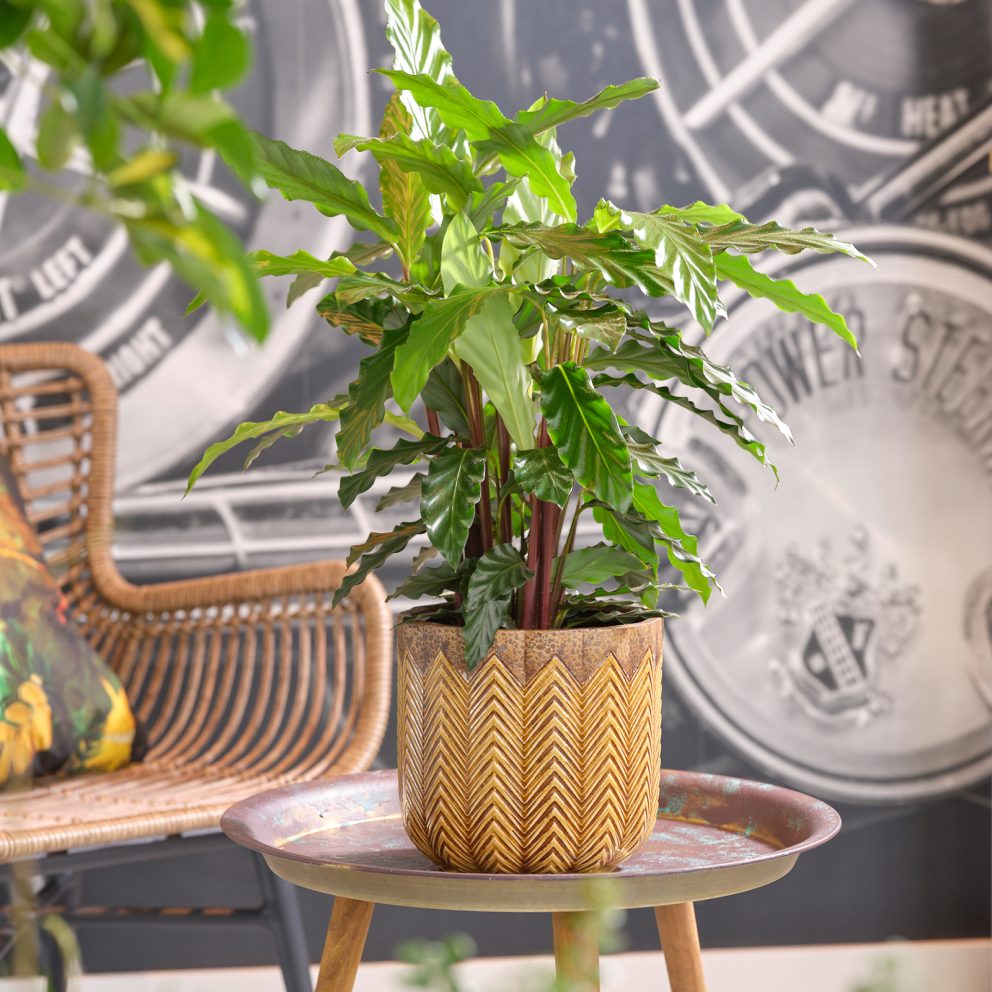
Frequently Asked Questions about Houseplants
All of your questions about houseplants answered…
Read article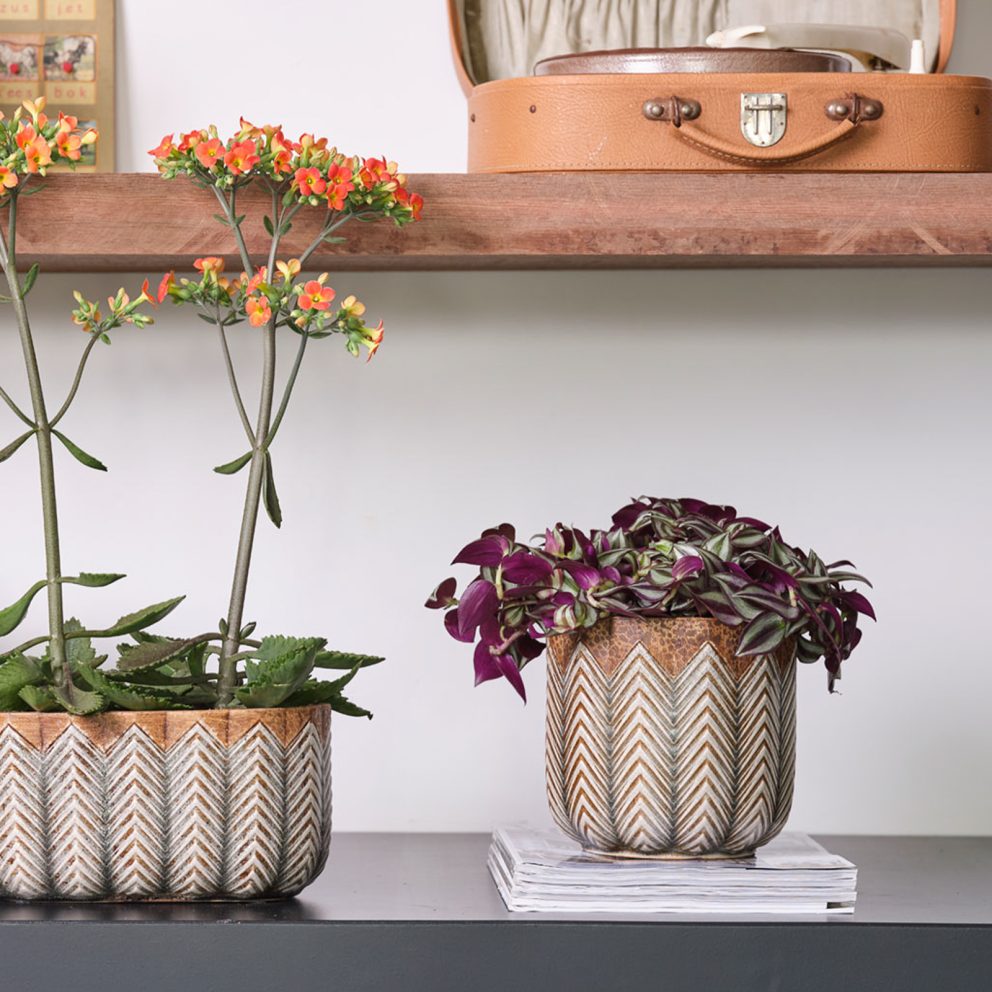
Top 5 Air Purifying Houseplants
As well as their aesthetic appeal, many houseplants also act as air purifiers, absorbing pollutants and releasing oxygen. Read our top five picks below.
Read article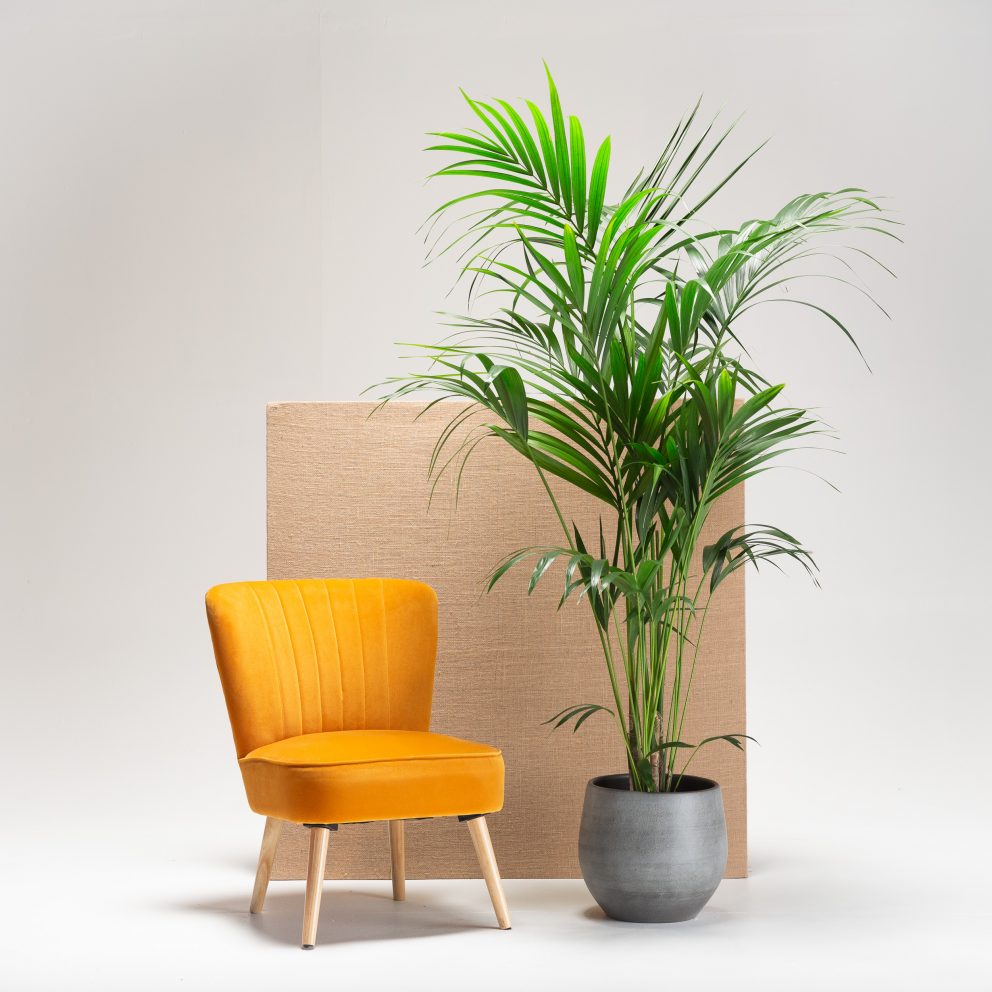
Our Top 5 Indoor Palm Recommendations
Here are our top five recommendations for indoor palms in the U.K.
Read article
